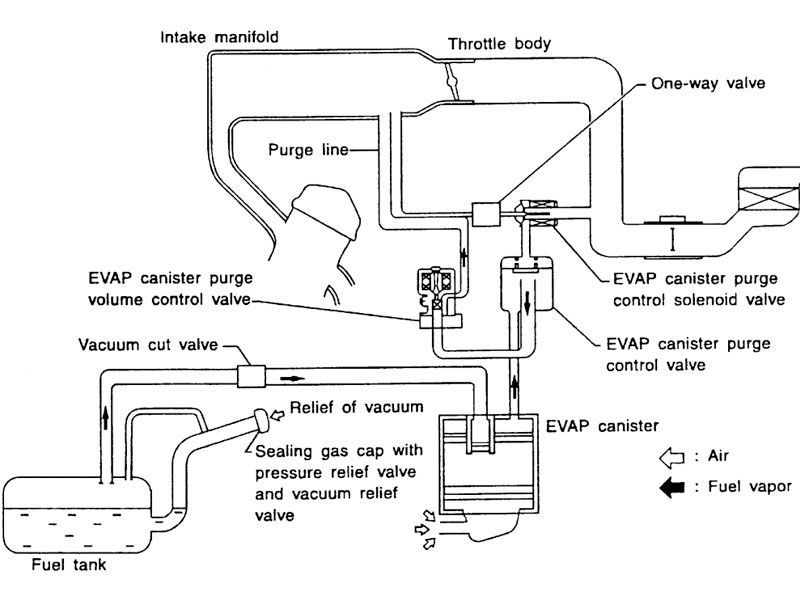Emission Control Systems In Automobiles
FEBRUARY 19, 2016

How Evaporative Emission Control Systems In Automobiles Work
When we think of car emission control systems in automobiles work, we usually think of dark smoke or fumes coming out of our exhaust pipes. While we drive, internal combustion processes create noxious chemicals (like CO2 and nitrogen oxides) and get released into the air. But tailpipe emissions are now controlled using a number of systems like catalytic converters and exhaust gas recirculation systems, all of which are regulated by the state and federal government.
Did you know that there is another type of emission emitted by our cars? Evaporative emissions. The gas in your tank and fuel lines evaporates more gradually, releasing volatile compounds into the air. The Environmental Protection Agency says that evaporative emissions contribute to air pollution and even pose a risk to human health.
Because of the danger these fumes pose, the government also closely regulates these emissions in vehicles. Which is why carmakers are required to install evaporative emissions control systems in every new car and truck. And this has been going on since the early 1970s when car manufacturers first made these changes for the environment. As technology continues to advance, car companies are finding even better ways to reduce pollution.
Now let’s look at how evaporative emissions control systems work and learn about the ways you can avoid fuel evaporating in your vehicle.
The fuel we put in our cars contains more than 150 chemicals, including benzene, toluene and sometimes even lead. These ingredients can cause dizziness, breathing problems and headaches when they’re inhaled. Inhaling large amounts of gasoline fumes can even cause death. On top of all that, evaporated gasoline is one of the leading causes of smog and air pollution.
For these reasons, carmakers are required to install Emission Control Systems on their vehicles that help mitigate gasoline evaporations. Environmental regulation in the United States began in earnest in the early 1970s, and as a result, cars have had evaporative emission control (EVAP) systems ever since. These systems are designed to store and dispose of fuel vapors before they can escape into the atmosphere.
A typical system consists of a small canister full of charcoal, valves, hoses, vents in the fuel lines and a sealed fuel tank cap. When fuel evaporates inside the gas tank, the excess vapors are transferred to the charcoal canister. They’re stored there until they can safely be transferred back to the engine to be burned with the normal air-fuel mixture.
When that’s ready to happen, a valve creates a vacuum that draws the vapors into the engine. Fresh air is also drawn in through the vents and valves to mix with the vapors for better combustion. These systems can be controlled mechanically, or like on most on newer cars, through the engine’s computer. The computer tells the valves when to purge the canister of vapors. This typically happens when the car is in motion, rather than at idle. It’s just one example of some of the behind-the-scenes technology that you’ll likely never see or feel.
As you may expect, things can go wrong with the EVAP system, too. If the canister fails to purge or does so under the wrong conditions, it can hamper the performance and emissions of your vehicle. When this happens, you may find that the entire system needs to be replaced.
Up next, we’ll learn more about gasoline evaporation and discuss what you can do to reduce it in your own vehicle.

More information on emissions and automotive diagnostics:
- Emissions Repair Service and Diagnostics
- Controlling Emissions in Automobiles
- Check Engine Light On
- Smog Check
More Services we offer:
Loading ...
Missing business hours data / Error occurred while getting the data.
Our Location
Have Trouble Finding Us?
Loading ...
Missing nap lines data / Error occured while getting the data.
